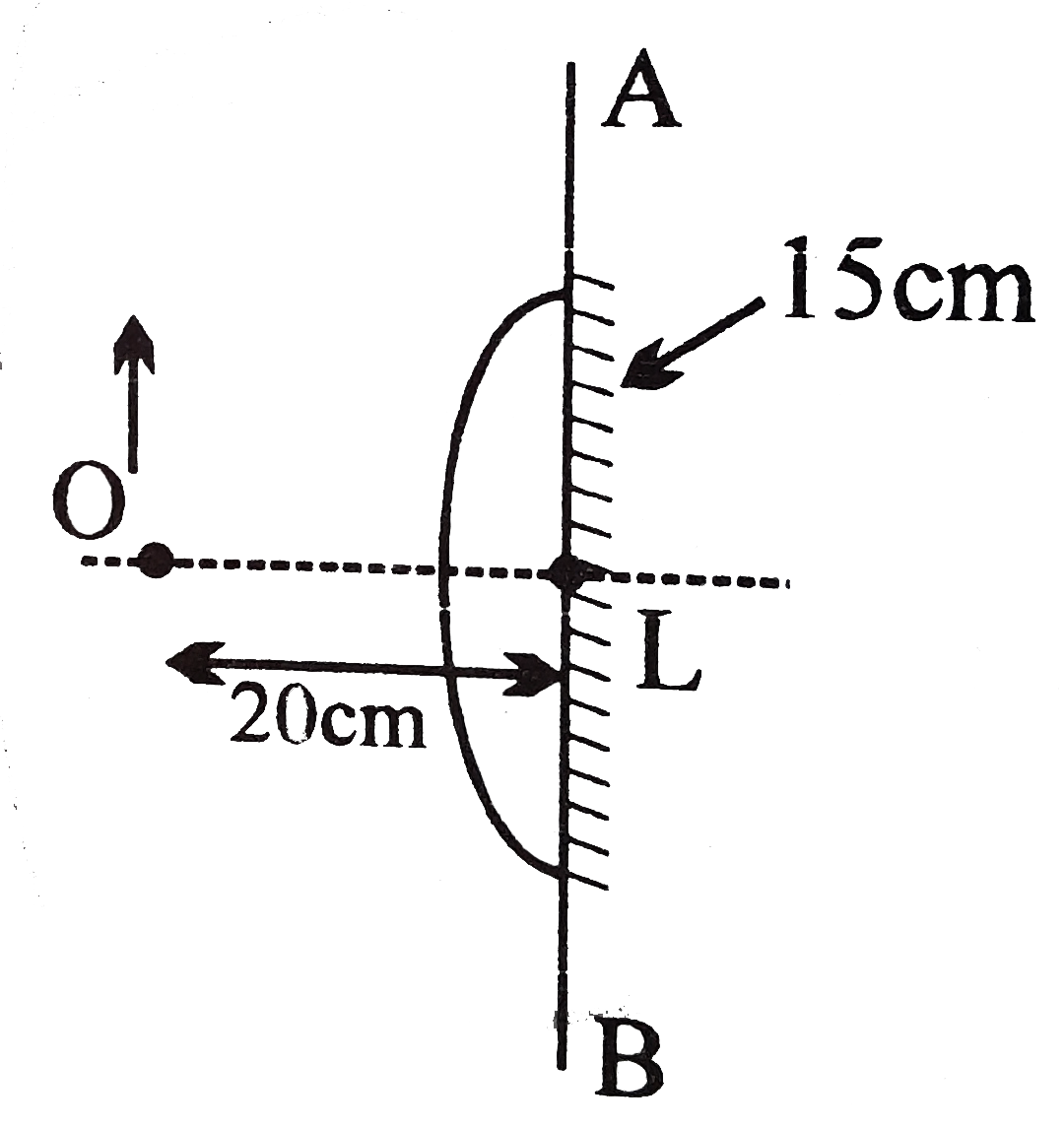A object is placed 20 cm from the convex lens, with focal length 40 cm. The image formed is virtual and erect.
What will be power of the lens?
−2.5D
+0.025D
+2.5D
−0.025D
The correct Answer is:C
To solve the problem step by step, we will use the lens formula and the formula for the power of a lens.
Step 1: Identify the given values
- Object distance (u) = -20 cm (negative because the object is on the same side as the incoming light)
- Focal length (f) = +40 cm (positive for a convex lens)
Step 2: Use the lens formula
The lens formula is given by:
1v−1u=1f
Rearranging this gives:
1v=1f+1u
Step 3: Substitute the values into the lens formula
Substituting the values of f and u into the formula:
1v=140+1−20
Step 4: Calculate the right side
Calculating the right side:
1v=140−120
To combine these fractions, find a common denominator (which is 40):
1v=140−240=−140
Step 5: Solve for v
Taking the reciprocal gives:
v=−40 cm
The negative sign indicates that the image is virtual and located on the same side as the object.
Step 6: Calculate the power of the lens
The power (P) of a lens is given by the formula:
P=1f
Where f is in meters. First, convert the focal length from centimeters to meters:
f=40 cm=0.4 m
Now substitute into the power formula:
P=10.4=2.5 diopters
Step 7: Convert to centimeters
If we want to express the power in terms of centimeters:
P=100f (for f in cm)
So,
P=10040=2.5 diopters
Final Answer
The power of the lens is +2.5 diopters.
---
- Object distance (u) = -20 cm (negative because the object is on the same side as the incoming light)
- Focal length (f) = +40 cm (positive for a convex lens)
The lens formula is given by:
1v−1u=1f
Rearranging this gives:
1v=1f+1u
Substituting the values of f and u into the formula:
1v=140+1−20
Calculating the right side:
1v=140−120
To combine these fractions, find a common denominator (which is 40):
1v=140−240=−140
Taking the reciprocal gives:
v=−40 cm
The negative sign indicates that the image is virtual and located on the same side as the object.
The power (P) of a lens is given by the formula:
P=1f
Where f is in meters. First, convert the focal length from centimeters to meters:
f=40 cm=0.4 m
Now substitute into the power formula:
P=10.4=2.5 diopters
If we want to express the power in terms of centimeters:
P=100f (for f in cm)
So,
P=10040=2.5 diopters
The power of the lens is +2.5 diopters.
Similar Questions
Knowledge Check
- Question 1 - Select One
An object is placed at a distance of 20 cm from a convex lens of focal length 10 cm . The image is formed on the other side of the lens at a distance
A20 cmB10 cmC40 cmD30 cm - Question 2 - Select One
An object is placed 30cm away from a convex lens of focal length 10cm and a sharp image is formed on a screen. Now, a convex lens is placed In contact with the convex lens. The screen now has to be moved by 45cm to get a sharp image again. The magnitude of focal length of the convex lends in (in cm)
A72B60C36D20 - Question 3 - Select One
A point object is placed at a distance of 20cm from a thin plano-convex lens of focal length 15cmIf the plane surface is silvered.the image will form at
 A60cmleft of ABB30cmleft of ABC12cmleft of ABD60cmRight of AB
A60cmleft of ABB30cmleft of ABC12cmleft of ABD60cmRight of AB
An object is placed at 40 cm from a convex lens of focal length 20 cm. State the nature and the size of the image relative to that of the object.
View SolutionA convex lens has focal length 20 cm. What is the power of the lens?
View SolutionAn object is placed at a distance of 30 cm from a convex lens of focal length 20 cm.Find the position of the image .
View SolutionAn object of 10 cm is.placed at a distance of 20 cm from a lens of focal length 25 cm. The object is placed erect on the principal axis of the. lens yet a crooked image was formed. Explain why.
View SolutionAn object of height 5 cm is placed in front of a convex lens of focal length 20 cm at a distance of 30 cm. What is the height of the image (in cm)?
View Solution

